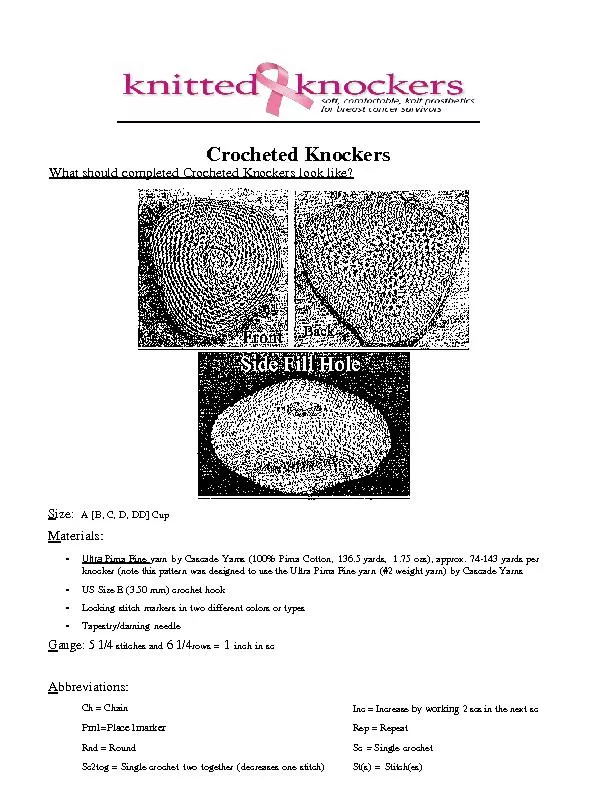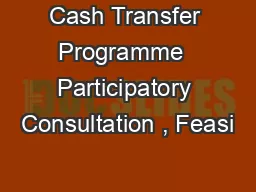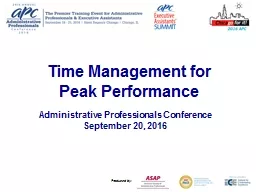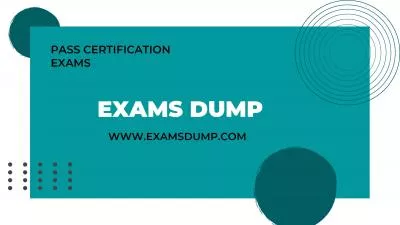PDF-NNEX ATERIALS FOR PLANNING AND MANAGING THE WHO PROGRAMME
Author : obrien | Published Date : 2021-10-03
Managing WHO Humanitarian Response in the Field Annexes Draft 27 June 08 45Annex C3 Lifesaving activities in health and related sectors for CERF The table below
Presentation Embed Code
Download Presentation
Download Presentation The PPT/PDF document "NNEX ATERIALS FOR PLANNING AND MANAGING ..." is the property of its rightful owner. Permission is granted to download and print the materials on this website for personal, non-commercial use only, and to display it on your personal computer provided you do not modify the materials and that you retain all copyright notices contained in the materials. By downloading content from our website, you accept the terms of this agreement.
NNEX ATERIALS FOR PLANNING AND MANAGING THE WHO PROGRAMME: Transcript
Download Rules Of Document
"NNEX ATERIALS FOR PLANNING AND MANAGING THE WHO PROGRAMME"The content belongs to its owner. You may download and print it for personal use, without modification, and keep all copyright notices. By downloading, you agree to these terms.
Related Documents

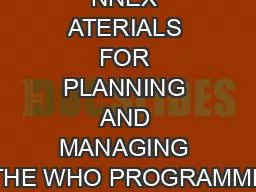

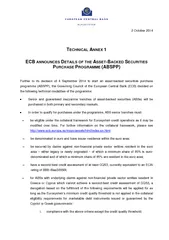


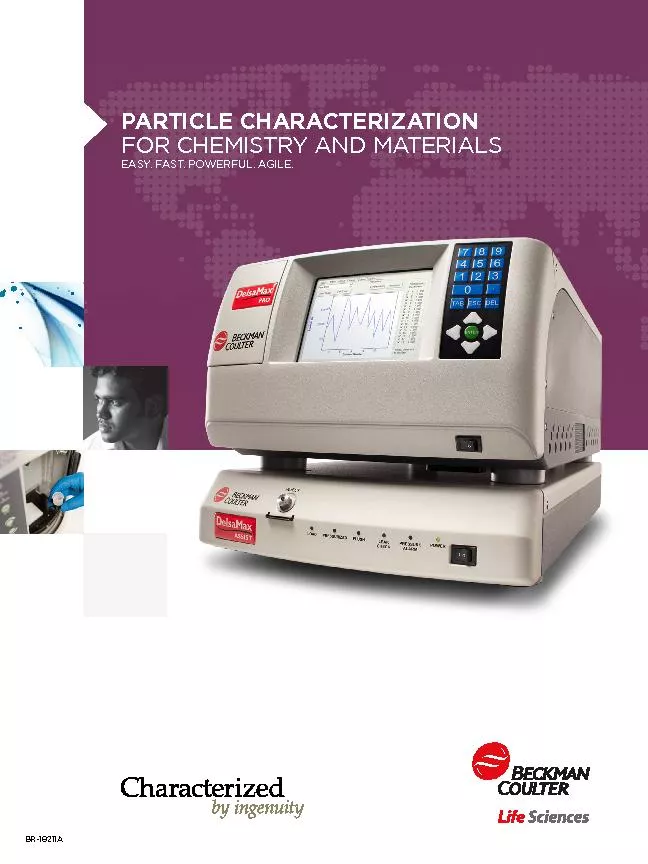
![NQuinolineBenzo[b]pyridine(1-azanaphtalene)abc12344a5678](https://thumbs.docslides.com/312418/nquinolinebenzo-b-pyridine-1-azanaphtalene-abc12344a5678.jpg)
